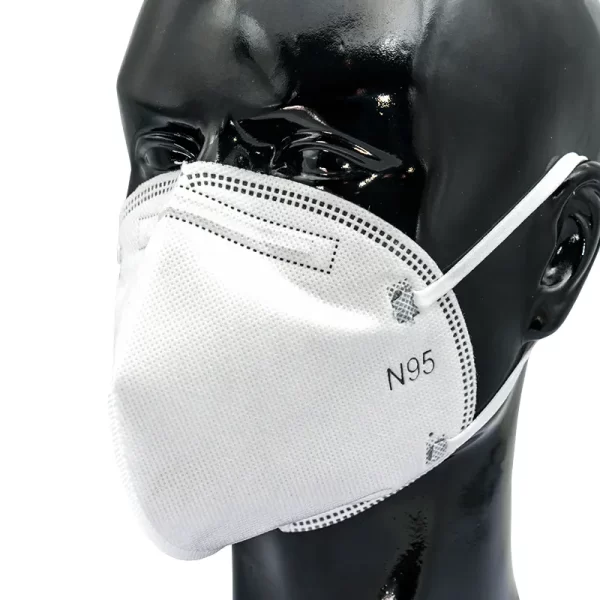The Evolution of the N95 Face Mask A Historical Perspective
Introduction
The story of the N95 face mask, currently an indispensable tool in our arsenal of public health and safety measures, is both fascinating and multifaceted. As we grappled with the global upheaval caused by the COVID-19 pandemic, this particular face mask rapidly transformed from a piece of specialist equipment known only to a few, into a universal symbol of protection and a household name. But what is the origin story of this vital piece of personal protective equipment? In this article, we’ll trace the evolutionary journey of the N95 face mask, exploring its beginnings, its development, and its paramount role in today’s society.
Origins and Early Developments
The roots of the N95 mask can be traced back to the devastating 1918 flu pandemic, often referred to as the Spanish flu. This global health crisis, which infected an estimated one-third of the world’s population, marked the first widespread use of face masks as a preventative measure. Back then, the masks were rudimentary at best, fashioned out of gauze or cotton and secured with a band around the wearer’s head. Despite their basic design and limited effectiveness, these masks represented a critical first step in recognizing the potential of face coverings as a method of disease control.
The years following the 1918 pandemic saw gradual improvements in mask design and material, as health experts and inventors sought to enhance the protective capabilities of these early face coverings. Nonetheless, these early incarnations were a far cry from the meticulously engineered N95 masks we’re familiar with today.
The Birth of the Disposable Respirator
The history of the N95 mask entered a pivotal phase in the 1970s. This era brought a groundbreaking development in respiratory protection, when the United States’ Bureau of Mines and the National Institute for Occupational Safety and Health (NIOSH) introduced standards for single-use respirators. With this innovation came the birth of the N95 mask, aptly named for its ability to filter out 95% of airborne particles.
The advent of the disposable N95 respirator represented a monumental leap in industrial safety standards. It provided an effective and reliable solution for workers exposed to airborne contaminants in various industries, such as mining, construction, and manufacturing. It offered a safer environment for workers, significantly reducing the risk of occupational diseases linked to poor air quality.
The features that distinguished the N95 from its predecessors were its unique filter material and the secure, face-conforming fit. This design ensured that inhaled air passed through the filter, effectively trapping harmful particles, and provided superior protection compared to the cloth masks of earlier years.
Emergence in Healthcare
The 1990s marked another significant turning point for the N95 mask. The global outbreak of tuberculosis brought the mask to the forefront as an essential tool in infection control within healthcare settings. Tuberculosis, like COVID-19, is an airborne disease that can easily spread in crowded or enclosed environments, and the N95 mask proved invaluable in protecting healthcare workers and preventing further disease transmission. This was the first instance of N95 masks being used extensively outside of industrial settings, marking a shift towards their broader application in public health.
The COVID-19 Era
The emergence of the COVID-19 pandemic in 2019 turned the N95 mask from a specialist item into an everyday essential practically overnight. As the virus spread rapidly across the globe, the demand for these masks skyrocketed.
This sudden surge in demand exposed several challenges, including supply chain disruptions, counterfeiting issues, and the need for proper mask usage education among the general public. Despite these challenges, the N95 mask’s high filtration efficiency and snug fit provided frontline healthcare workers and the general public with much-needed protection against the virus, predominantly transmitted via respiratory droplets and aerosols.
COVID-19 also spurred innovation in mask design and manufacturing. As supplies of N95 masks ran low, manufacturers had to ramp up production quickly, and researchers and designers sought to create reusable versions of the mask. Advances in 3D printing technology were leveraged to produce reusable N95 mask alternatives, demonstrating the potential for technology to bolster our pandemic response.
The Future of the N95 Mask
As we look ahead, the N95 mask will continue to evolve in response to our changing needs. Researchers are already working on next-generation masks, with features such as self-cleaning capabilities, advanced filtration technologies, and improved comfort and fit. Such developments signify the ongoing commitment to improving personal protective equipment and the pivotal role the N95 mask plays in our fight against airborne diseases.
Conclusion
Tracing the history of the N95 mask from its humble beginnings as a simple cloth covering during the 1918 flu pandemic, through to its role as a frontline defense against the COVID-19 virus, it’s evident that this piece of personal protective equipment has come a long way. As we continue to battle the COVID-19 pandemic and brace for potential future health crises, the N95 mask, a testament to human ingenuity and our scientific progress, will undoubtedly remain an essential tool in our public health arsenal. We must anticipate further evolutions of this crucial protective gear, reflecting our persistent commitment to safety, protection, and the preservation of human life.
Please visit our website for more product details https://medposnonwoven.com/product/n95%ef%bc%88ffp2-nr%ef%bc%89respirator-cup-mask/

